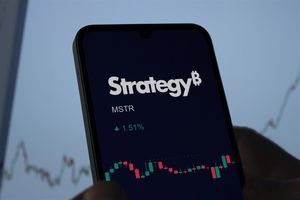
The global economy, increasingly reliant on digital infrastructure, has been repeatedly shaken by the fragility of its semiconductor supply chain. From the sophisticated processors in our smartphones to the embedded chips controlling modern vehicles, semiconductors are the unseen architects of the 21st century. However, recent years have exposed profound vulnerabilities, turning a once-specialized industry into a critical geopolitical and economic battleground. The severe disruptions experienced from 2020 to 2023, particularly impacting the automotive industry, have underscored the urgent need for a robust and resilient chip supply, prompting a global re-evaluation of manufacturing strategies, inventory management, and international collaboration.
The immediate significance of addressing these issues cannot be overstated. As of late 2025, while some acute pandemic-era shortages have eased, new bottlenecks are emerging, particularly for high-bandwidth memory (HBM) and advanced packaging vital for the booming Artificial Intelligence sector. Geopolitical tensions, concentrated manufacturing hubs (especially Taiwan for advanced logic chips), and the inherent complexity of chip production continue to pose substantial risks. The economic fallout from past disruptions, estimated at hundreds of billions of dollars, serves as a stark reminder that a secure and diversified semiconductor supply chain is not merely an industrial necessity but a strategic imperative for national security, economic stability, and the relentless march of technological innovation.
The Intricate Web: Unpacking Semiconductor Supply Chain Vulnerabilities and Resilience Strategies
The semiconductor supply chain is an extraordinarily complex, globally distributed, and highly specialized ecosystem, making it inherently susceptible to disruption. Unlike many other industries, chip manufacturing involves hundreds of steps, specialized equipment from a handful of suppliers, and critical materials often sourced from specific geographic regions. This intricate web, combined with a historical reliance on just-in-time (JIT) inventory systems, has amplified vulnerabilities.
Historically, the industry thrived on efficiency and cost optimization, leading to extreme geographical concentration. For instance, Taiwan Semiconductor Manufacturing Company (TSMC) (TWSE: 2330) alone produces over 90% of the world's most advanced logic chips. This concentration, while driving innovation, creates a single point of failure susceptible to natural disasters, geopolitical conflicts, or even localized power outages. The COVID-19 pandemic highlighted this dramatically: factory closures, port backlogs, and a sudden surge in demand for consumer electronics due to remote work and online learning created a "perfect storm." Automakers, initially cutting chip orders in anticipation of reduced sales, found themselves at the back of the queue when demand rebounded, leading to billions in lost revenue and significant production halts well into 2023. Even in 2025, legacy nodes, crucial for automotive and industrial applications, continue to face supply constraints, while advanced AI chips are sold out months in advance.
Strategies for enhancing resilience represent a significant departure from previous approaches. The traditional focus on lean manufacturing and globalized sourcing is being supplemented, if not partially replaced, by initiatives aimed at diversification, regionalization, and strategic stockpiling. Governments worldwide have launched ambitious programs, such as the U.S. CHIPS and Science Act and the European Chips Act, committing tens of billions of dollars to incentivize domestic semiconductor manufacturing. These initiatives aim to reduce reliance on single regions, foster new foundries, and create more localized ecosystems for various stages of chip production, from fabrication to advanced packaging. This shift involves not just building new fabs but also investing in research and development, workforce training, and securing raw material supplies.
Furthermore, companies are re-evaluating their inventory strategies, moving from purely JIT models to more "just-in-case" approaches, incorporating buffer stocks for critical components. Enhanced supply chain visibility, leveraging data analytics and AI for better demand forecasting and risk assessment, is also becoming paramount. This includes mapping multi-tier suppliers to identify potential choke points before they become critical. Collaborative efforts between chip manufacturers, their suppliers, and end-users (like automakers) are also improving, with long-term supply agreements and joint investment in capacity expansion becoming more common. These measures collectively aim to create a more robust, transparent, and responsive supply chain capable of absorbing future shocks.
Corporate Maneuvers: AI, Tech Giants, and the Competitive Landscape
The push for semiconductor supply chain resilience is profoundly reshaping the competitive landscape for AI companies, tech giants, and startups alike. Companies that can secure stable access to chips, especially advanced AI-specific processors, stand to gain significant strategic advantages. Conversely, those reliant on vulnerable supply lines face substantial risks to their product roadmaps, market share, and profitability.
Major AI labs and tech giants like NVIDIA (NASDAQ: NVDA), Google (NASDAQ: GOOGL), Amazon (NASDAQ: AMZN), and Microsoft (NASDAQ: MSFT) are at the forefront of this shift. NVIDIA, a dominant player in AI accelerators, is investing heavily in securing its supply chain for its high-demand GPUs and related components, including high-bandwidth memory (HBM) and advanced packaging. Google, Amazon, and Microsoft, all developing their custom AI chips (like Google's TPUs and Amazon's Inferentia/Trainium), are strategically partnering with leading foundries and actively exploring diversified manufacturing options to ensure a consistent supply for their burgeoning cloud AI infrastructure. Their ability to design and procure specialized silicon gives them a degree of control and differentiation that smaller players may struggle to achieve.
The competitive implications are stark. Companies with direct foundry relationships or significant purchasing power can lock in capacity, potentially leaving smaller startups and even mid-tier tech firms scrambling for limited chip allocations. This creates a two-tiered system where access to cutting-edge AI silicon becomes a critical differentiator. Moreover, the trend towards regionalization and domestic manufacturing, while beneficial for overall resilience, could lead to increased production costs. Companies that can effectively manage these costs while maintaining supply chain agility will emerge stronger. For instance, automotive giants like General Motors (NYSE: GM) and Ford (NYSE: F), having learned from past shortages, are now engaging directly with chip manufacturers, sometimes even co-investing in production, a significant shift from their traditional procurement models.
Potential disruption to existing products or services is a constant threat. Any bottleneck in the supply of critical AI chips could delay the deployment of new AI models, cloud services, or advanced autonomous systems. This could impact market positioning, allowing competitors with more secure supply lines to gain ground. Startups, in particular, face challenges in securing consistent access to the latest chips, potentially hindering their ability to innovate and scale. However, this environment also fosters innovation in chip design, with a growing emphasis on modularity, open-source hardware, and alternative architectures that might be less dependent on a single manufacturing process or location, creating opportunities for new entrants focusing on niche AI hardware solutions.
A New Era of Strategic Competition: Broader Significance and Global Trends
The drive for semiconductor supply chain resilience is more than just an industrial concern; it is a foundational shift reflecting broader geopolitical, economic, and technological trends. This pivot signifies a new era of strategic competition, where access to and control over advanced chip manufacturing is increasingly seen as a cornerstone of national power and economic sovereignty.
This development fits squarely into a broader global trend of de-globalization or "slowbalization," where countries are prioritizing national security and economic self-reliance over pure cost efficiency. The "chip wars" between the U.S. and China exemplify this, with both nations investing heavily in domestic manufacturing capabilities and implementing export controls on advanced technologies. This geopolitical dimension means that semiconductor supply chain decisions are no longer purely commercial but are deeply intertwined with foreign policy and national defense. The reliance on a few key regions, particularly Taiwan, poses significant risks given potential geopolitical flashpoints, making diversification a strategic imperative for many nations.
The impacts are far-reaching. Economically, the increased investment in domestic fabs, while boosting local economies and creating jobs, could lead to higher chip prices due to less optimized global production. Technologically, it could accelerate innovation in new materials, manufacturing processes, and chip architectures as regions strive for self-sufficiency. However, it also raises concerns about potential fragmentation of standards and reduced global collaboration on R&D, which has historically been a hallmark of the semiconductor industry. There's also the risk of overcapacity in the long run if too many nations independently pursue full self-sufficiency, leading to inefficient resource allocation.
Comparisons to previous AI milestones highlight the current moment's unique significance. While past breakthroughs focused on algorithmic advancements or data processing capabilities, the current crisis underscores that the physical infrastructure—the chips themselves—is as critical as the software. Without a stable supply of advanced silicon, the grand visions of ubiquitous AI, autonomous vehicles, and quantum computing remain constrained. This period marks a recognition that the foundational hardware layer is a strategic bottleneck, unlike previous eras where software and data were often seen as the primary limiting factors. The emphasis on hardware resilience is a testament to AI's increasing computational demands and its pervasive role across industries.
The Road Ahead: Future Developments and Expert Predictions
The journey towards a truly resilient semiconductor supply chain is ongoing, with significant developments expected in both the near and long term. Experts predict a multi-faceted approach, combining technological innovation, strategic investment, and international cooperation (albeit within a framework of geopolitical competition).
In the near term, we can expect to see continued aggressive investment in new foundry capacity, particularly in the U.S. and Europe, driven by government incentives. Companies like Intel (NASDAQ: INTC) are making substantial commitments to expand their manufacturing footprint, not just for their own products but also as a foundry service for others. There will be a sustained focus on diversifying sourcing for critical raw materials and specialized equipment, moving away from single points of failure. Furthermore, the automotive industry will continue its trend of deeper integration with chip suppliers, including longer-term supply agreements and potentially even direct equity investments in fabs. The demand for advanced packaging technologies, crucial for stacking multiple chips (like HBM with logic chips for AI), will also see rapid expansion and investment, as this stage is becoming as critical as front-end wafer fabrication.
Looking further ahead, potential applications and use cases on the horizon include the widespread adoption of modular chip designs and chiplets, which allow for greater flexibility in manufacturing and sourcing by combining different specialized components into a single package. This could reduce reliance on monolithic, highly integrated designs that require a single, advanced fab. Research into alternative semiconductor materials beyond silicon, such as gallium nitride (GaN) and silicon carbide (SiC), will accelerate, offering performance benefits and potentially diversifying the material supply chain. Furthermore, advanced AI and machine learning will play an increasingly vital role in optimizing supply chain logistics, predicting disruptions, and even designing more resilient chip architectures.
However, significant challenges need to be addressed. Securing a skilled workforce for new fabs is a major hurdle, requiring substantial investment in education and training programs. The high capital costs and long lead times for building new foundries (often 3-5 years) mean that solutions are not instantaneous. Geopolitical tensions will remain a persistent challenge, potentially leading to further trade restrictions and fragmenting the global technology ecosystem. Experts predict that while the most acute general chip shortages may abate, specific bottlenecks, particularly for cutting-edge AI chips and certain legacy nodes, will likely persist into the latter half of the decade due to surging demand and the time required to bring new capacity online. The consensus is that a truly "resilient" supply chain will be a dynamic, continuously evolving system, not a static achievement.
Charting a Course Through Uncertainty: A Comprehensive Wrap-Up
The quest for semiconductor supply chain resilience marks a pivotal moment in the history of technology and global commerce. The disruptions of the early 2020s served as a stark awakening, revealing the profound vulnerabilities inherent in a highly specialized, globally concentrated industry that underpins virtually every aspect of modern life. The key takeaways from this period are clear: unchecked efficiency at the expense of resilience is no longer a viable strategy, geopolitical considerations are now inseparable from industrial policy, and a diversified, transparent, and collaborative approach is essential for future stability.
This development's significance in AI history is profound. It underscores that the future of AI is not solely about algorithms and data; it is fundamentally reliant on the physical infrastructure—the chips—that power these intelligent systems. The scramble for chip supply has elevated hardware to a strategic asset, forcing tech giants, governments, and industries to rethink their entire operational frameworks. It signals a shift from a purely demand-driven market to one where supply security is paramount, influencing everything from product design to national security doctrines.
Looking ahead, the long-term impact will likely include a more geographically dispersed manufacturing base, particularly for advanced nodes, and a stronger emphasis on regional self-sufficiency for critical components. While this may lead to higher production costs and potentially slower innovation in some areas due to reduced global collaboration, it promises greater stability and reduced vulnerability to future shocks. The role of AI in managing these complex, new supply chains will also expand significantly, becoming a critical tool for forecasting, risk management, and optimization.
In the coming weeks and months, watch for further announcements regarding new foundry investments, especially in the U.S., Europe, and Japan. Pay close attention to how governments navigate trade policies and export controls related to advanced chip technology. Observe how automotive companies continue to integrate with their semiconductor suppliers, and how AI companies adapt their strategies to secure access to the next generation of specialized AI accelerators. The journey to a truly resilient semiconductor supply chain is a marathon, not a sprint, and its evolution will shape the technological and economic landscape for decades to come.
This content is intended for informational purposes only and represents analysis of current AI developments.
TokenRing AI delivers enterprise-grade solutions for multi-agent AI workflow orchestration, AI-powered development tools, and seamless remote collaboration platforms.
For more information, visit https://www.tokenring.ai/.







